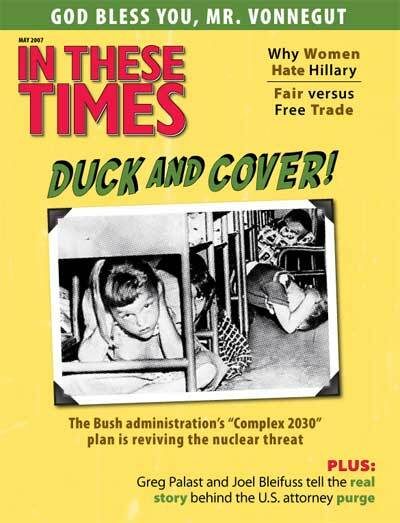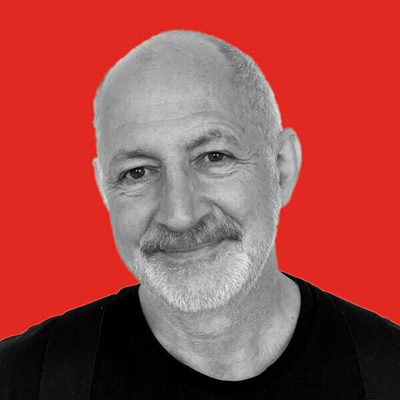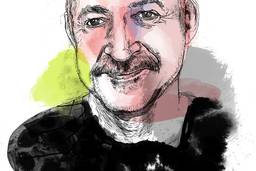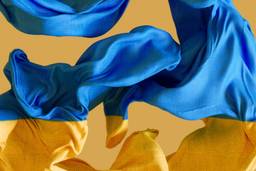The Fraudulence of Voter Fraud
The Bush administration purged U.S. attorneys for failing to prosecute crimes that didn’t occur
Joel Bleifuss
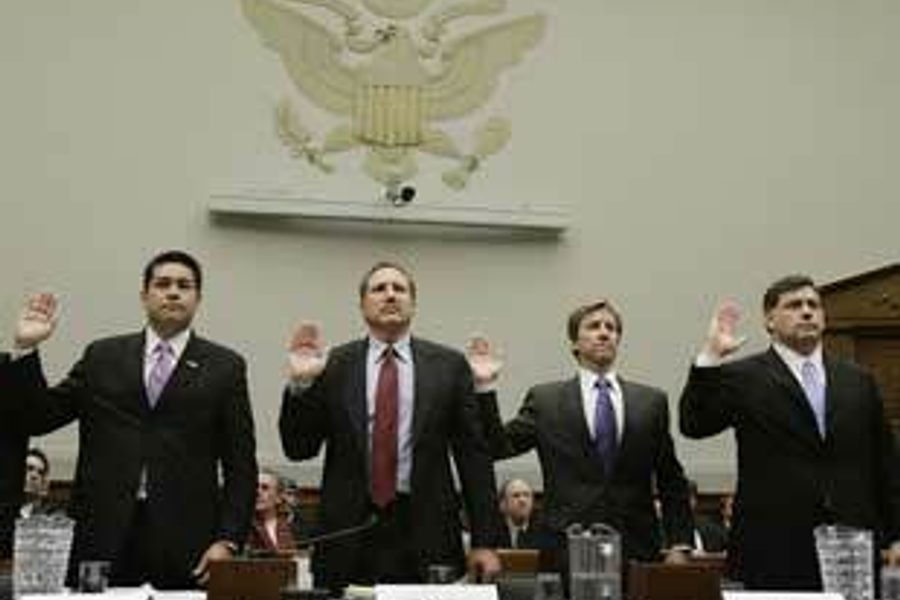
On April 6, 2006, in Washington, D.C., Karl Rove gave a speech to the Republican National Lawyers Association and issued this dire warning:
We are, in some parts of the country, I’m afraid to say, beginning to look like we have elections like those run in countries where the guys in charge are, you know, colonels in mirrored sunglasses. I mean, it’s a real problem, and I appreciate all that you’re doing in those hot spots around the country to ensure that the ballot – the integrity of the ballot – is protected, because it’s important to our democracy.
When Rove talks about protecting “ballot integrity,” that is shorthand for disenfranchising Democratic Party voters. Over the last several years, the Justice Department, with the help of White House operatives, has sought to boost GOP electoral fortunes by orchestrating a national campaign against voter fraud. But the administration overreached on Dec. 7, when President George W. Bush fired eight U.S. attorneys, a political scandal that some say could become this president’s Watergate.
When Republicans talk about voter fraud they are referring to illegal voting by individuals, as opposed to vote fraud – systematic attempts to steal an election by an organized group of partisans. This emphasis on voter fraud has convinced eight states to pass laws requiring voters to present official photo identification in order to cast a ballot – laws that studies have shown suppress Democratic turnout among voters who are poor, black, Latino, Asian-American or disabled.
Understanding that one way to win closely contested elections is to keep Democratic voters away from the polls, the Republican Party has tried to stoke public fears of voter fraud. On Feb. 15, 2005, the U.S. Senate Republican Policy Committee issued a report, “Putting an End to Voter Fraud,” which said, “Voter fraud continues to plague our nation’s federal elections, diluting and canceling out the lawful votes of the vast majority of Americans.” To remedy the situation, the Senate Republicans advised Congress to “require that voters at the polls show photo identification.”
But voting experts maintain that voter fraud is not a national problem. In March, Lorraine C. Minnite, a professor of political science at Columbia University, released “The Politics of Voter Fraud,” a report she prepared for Project Vote, an advocacy group based in Arkansas. She writes:
The claim that voter fraud threatens the integrity of American elections is itself a fraud. It is being used to persuade the public that deceitful and criminal voters are manipulating the electoral system. … The exaggerated fear of voter fraud has a long history of scuttling efforts to make voting easier and more inclusive, especially for marginalized groups in American society. With renewed partisan vigor, fantasies of fraud are being spun again to undo some of the progress America has made lowering barriers to vote.
This is borne out by a study from the Eagleton Institute of Politics at Rutgers University, which found that in the 2004 election, voters in states that required documentation of identity were 2.7 percent less likely to vote than voters in states where documentation was not required. Specifically, the study, commissioned by the U.S. Election Assistance Commission, found that Latinos were 10 percent less likely to vote, Asian-Americans 8.5 percent less likely to vote and blacks 5.7 percent less likely to vote.
What’s more, despite GOP claims to the contrary, voter fraud is a very rare occurrence. In 2002 the Justice Department established the Ballot Access and Voting Integrity Initiative to ferret out fraudulent voters. On Oct. 4, 2005, Attorney General Alberto Gonzales, with great fanfare, proclaimed, “We’ve made enforcement of election fraud and corrupting offenses a top priority.” Yet according to an April 12 New York Times article, only 120 people have been charged with the crime over the past five years, leading to 86 convictions. Furthermore, the Times noted, federal attorneys say that most of the transgressions have been mistakes by immigrants and felons who simply misunderstood eligibility requirements.
The extent of voter fraud is further complicated by the fact that earlier this year the Election Assistance Commission changed the conclusions of a report it had commissioned. The original report by outside election experts concluded, “There is widespread but not unanimous agreement that there is little polling place fraud.” The commission deleted that sentence and replaced it with, “There is a great deal of debate on the pervasiveness of fraud.”
Rep. José Serrano (D.-N.Y.), who chairs the House Appropriations subcommittee that oversees the commission, is disturbed by this apparently politically motivated substitution. He told In These Times:
This possibly could be another Watergate. We have to ask the questions, “Why was this report doctored, and how does this play into the larger picture of voter suppression and intimidation?” By directing public attention to voter fraud you divert attention from the fact that Americans in certain communities are not able to cast their votes properly and that their votes are not being counted. Is this something that this small new agency thought of by themselves or did they get marching orders from somewhere else, perhaps as far up as the White House?
Firing prosecutors
It appears that, under Rove’s direction the White House has been planning to use U.S. attorneys to fan national fears of voter fraud. In his speech to the GOP lawyers, Rove listed 11 states that would play a pivotal role in the 2008 elections. Since 2005, Bush has appointed new U.S. attorneys in nine of those states: Florida, Colorado, Wisconsin, Minnesota, Iowa, Michigan, Nevada, Arkansas and New Mexico.
What’s more, the firings of U.S. attorneys in New Mexico, Arkansas and Washington appear directly related to this Republican plan to exploit the issue of voter fraud and suppress Democratic turnout.
In Arkansas, Bush fired a sitting U.S. attorney in order to appoint Rove protégé Tim Griffin. (See “The Talented Mr. Griffin” by Greg Palast on page 31.)
In Washington, fired U.S. Attorney John McKay had refused to prosecute alleged voter fraud in the 2004 Washington governor’s race, in which Democrat Chris Gregoire beat Republican Dino Rossi by 129 votes.
On March 6, McKay testified before the Senate that after the election Republicans pressured him to open an investigation. He said his office had examined the allegations of voter fraud and decided there was not enough evidence to pursue a case.
“Had anyone at the Justice Department or the White House ordered me to pursue any matter criminally in the 2004 governor’s election, I would have resigned,” McKay told the Seattle Times. “There was no evidence, and I am not going to drag innocent people in front of a grand jury.”
In New Mexico, David C. Iglesias was equally suspect in the eyes of the GOP. Recall that in 2000, Gore beat Bush by 377 votes in New Mexico. Consequently, in 2004, Democrat-affiliated groups initiated voter registration campaigns in New Mexico. As a result, two boys, age 13 and 15, received voter cards in the mail. Iglesias responded by setting up a bipartisan task force to investigate. This didn’t satisfy attorney Mickey D. Barnett, who represented the 2004 Bush-Cheney campaign in New Mexico. He told Iglesias he should bring federal charges against a canvasser who forged their signatures, which he refused to do.
In a New York Times op-ed, Iglesias wrote:
What the critics, who don’t have any experience as prosecutors, have asserted is reprehensible – namely that I should have proceeded without having proof beyond a reasonable doubt. The public has a right to believe that prosecution decisions are made on legal, not political grounds.
Manufacturing voter fraud
The issue of fraudulent voters undermining American democracy did not spontaneously erupt. To promote national concern about voter fraud, in March 2005 GOP operatives with ties to the White House established a 501©4 organization called the American Center for Voting Rights Legislative Fund (ACVR). The group went public by establishing a Web site, ac4vr.com. (The site has since been taken down for unknown reasons.)
According to its 990 tax forms, ACVR is based in Midlothian, Va., and its executive director is Robin DeJarnette, who is also the founder and executive director of the Virginia Conservative Action PAC. However, according to the registration form for its Internet domain name, the group’s address is a mailbox at a UPS Store in Dallas. The chairman of ACVR is Brian Lunde, a former Democratic National Committee official from Texas, who in 2004 was head of Democrats for Bush.
ACVR specializes in issuing studies that purport to document a host of voter fraud cases, like the report titled: “Democrat operatives far more involved in voter intimidation and suppression in 2004 than Republicans.”
On March 21, 2005, four days after ACVR went public, Rep. Bob Ney (R-Ohio), then chair of the Committee on House Administration, opened hearings on 2004 election irregularities. One person who testified was ACVR National Counsel Mark “Thor” Hearne II, who described himself as “a longtime advocate of voter rights and an attorney experienced in election law.” In the aftermath of the 2000 presidential campaign, Hearne was dispatched to Florida as a Republican observer in Broward County’s manual recount, and in 2004 he worked as the national general counsel for Bush/Cheney ‘04 Inc.
In his testimony, Hearne described ACVR as “committed to defending the rights of voters and working to increase public confidence in the fairness of the outcome of elections.” And he submitted to the committee a copy of the ACVR’s “Ohio Election Report,” of which he was the lead author. That report read in part:
This [Democratic] voter registration effort was not limited to registration of legal voters but, criminal investigations and news reports suggest, that this voter registration effort also involved the registration of thousands of fictional voters such as the now infamous Jive F. Turkey, Sr., Dick Tracy and Mary Poppins. Those individuals registering these fictional voters were reportedly paid not just money to do but were, in at least one instance, paid in crack cocaine.
And in testimony on Dec. 7, 2006, the same day the prosecutors were fired, Hearne told the Election Assistance Commission: “Recent press reports suggest that voter registration fraud remains a significant issue in the recent mid-term elections.”
The press contact for ACVR is Jim Dyke, who was the communications director of the Republican National Committee during the 2004 election. In the fall of 2005 he was working in the White House trying to get Harriet Miers on the Supreme Court, before moving on to work in Vice President Dick Cheney’s office. Brad Friedman of BradBlog.com reported that according to internet records, Dyke registered the ACVR Internet domain name, ac4vr.com, in December 2004. Those records have since disappeared from public view. (The source of ACVR’s funding is also mysterious. According to the Pittsburgh Tribune-Review, “When asked to name any contributors to his nonprofit, Hearne claimed he did not know but said Lunde did. When Lunde was asked, he claimed he did not know but said Hearne did.”)
Dyke is a good friend of his fellow Arkansan Tim Griffin, the new U.S. attorney in Arkansas. In 2004, both worked at the Republican National Committee helping Bush get re-elected. Dyke has been a vocal defender of Griffin’s appointment as U.S. Attorney. “He has a real passion for the law,” Dyke told the Arkansas Democrat-Gazette.
Rounding out the GOP operatives is Pat Rogers, who sits on the board of ACVR. An attorney for the Republican Party in New Mexico, he has been a vocal critic of fired U.S. Attorney Iglesias. According to the Albuquerque Tribune, Rogers is on the short list to replace Iglesias.
Rove’s role
Minnite, who did the study on voter fraud, has read through the reports prepared by ACVR and presented by Hearne at various official hearings. She noticed that the claims follow a predictable script. “It all starts to look the same,” she says. “There is a pattern in the way the documents that claim to show voter fraud are put together. It is usually a compilation of news reports on allegations. There is no follow up, no research done, no analysis.”
“As I delved into it, I was faced with the question: ‘Why do people think there is a lot of fraud when there isn’t any real evidence?’ I think people are being manipulated by politics, which takes the form of these reports that are dumped on the public. It is as if you get a big enough pile maybe you will convince people that the volume of fraud is quite large and that we have a serious problem.”
Wisconsin provides a case in point. At a March 13 press conference, White House Counsel Dan Bartlett identified Wisconsin as one of the states from which the White House had “received complaints about U.S. attorneys.”
In 2005, U.S. Attorney Steve Biskup, who was appointed by Bush, investigated these allegations of voter fraud and reported that he found no evidence on which to press charges.
It turns out that early in 2005, Republican officials in Wisconsin prepared a report titled “Fraud in Wisconsin 2004: A Timeline/Summary.” The document, which was found in White House and Justice Department records released by the House Judiciary Committee, was written by Chris Lato, the former communications director for the state Republican Party, on orders from Rick Wiley, the party’s executive director. The 30-page report, which covers Aug. 31, 2004 to April 1, 2005, contains 65 entries detailing voter fraud. The final example is titled: “RPW [Republican Party of Wisconsin] News Release: Evidence of Election Fraud Piles Up.”
The information contained in this Wisconsin compilation, made its way into a 78-page report released on July 21, 2005, by ACVR: “Vote Fraud, Intimidation & Suppression in the 2004 Presidential Election.” In the introduction, the ACVR’s Hearne and Lunde wrote that the report “documents hundreds of incidents and allegations from around the country. … [T]housands of Americans were disenfranchised by illegal votes cast on Election Day 2004 … [P]aid Democrat operatives were far more involved in voter intimidation and suppression activities than were their Republican counterparts. … [R]equiring government-issued photo ID at the polls … will help assure … that no American is disenfranchised by illegal votes.”
And who was behind this trail of misinformation? On April 7, Daniel Bice, a columnist for the Milwaukee Journal Sentinel, reported that a source familiar with the document told him, “The report was prepared for Karl Rove. Rick [Wiley] wanted it so he could give it to Karl Rove.”
On April 6, 2006, in Washington, at the aforementioned speech to Republican Party attorneys, Rove began with a joke: “I ran into [AVCR’s] Thor Hearne as I was coming in. He was leaving; he was smart, and he was leaving to go out and enjoy the day.” Rove then told the assembled party lawyers, “We have, as you know, an enormous and growing problem with elections in certain parts of America today.”
Rove should know. He helped grow the problem.
Joel Bleifuss, a former director of the Peace Studies Program at the University of Missouri-Columbia, is the editor & publisher of In These Times, where he has worked since October 1986.
